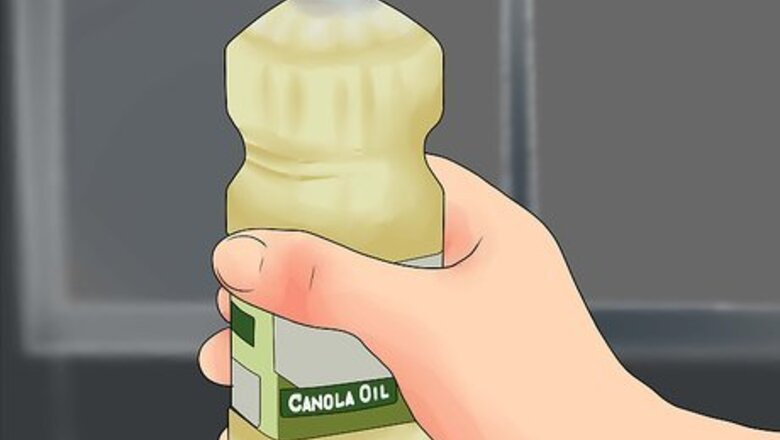
views
X
Trustworthy Source
National Institute on Drug Abuse
Leading U.S government agency supporting scientific research on drug use and its consequences.
Go to source
While consumption of cannabinoids is often accomplished by smoking, eating medical marijuana is typically the preferred method.[2]
X
Research source
However, cooking marijuana is not as simple as throwing pot leaves into your brownie mix. You must first create marijuana infused ingredients. Cooking with medical marijuana is then as simple as substituting a marijuana infused ingredient for a regular one.
Making Cannabis Cooking Oil

Choose your cooking oil base. Marijuana is not water-soluble. It is lipid-soluble (fat-soluble), which means that it dissolves in oils. You need cooking oil with high fat contents. Canola oil works well. You may also choose olive or coconut oil. However, olive and coconut oils have lower boiling points than canola oil. Choose your base depending on your application. If your final dish's recipe calls for a particular type of oil, you may consider that or a reliable substitute as an appropriate oil base.
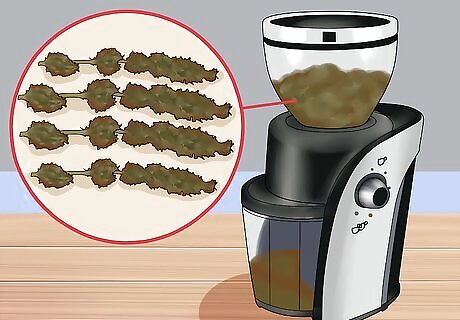
Grind your marijuana. You want to start with dry marijuana. You may choose to stick with only the flowers. Some people will use all parts of the plant. Keep in mind that you will want to strain your oil later. Try not to grind your pot so finely that it will go through your strainer. A coffee grinder or food processor will work well. Just don't turn your marijuana into powder.
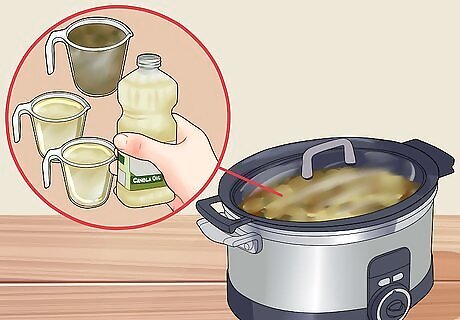
Mix your oil and marijuana. The strength of your cannabis cooking oil will vary by your mixture. Pour your oil into a slow cooker, double boiler, or saucepan. Add your ground marijuana and stir. Make sure all your marijuana is covered in oil. If you don't know what mixture will work, start with a mixture of two parts oil to one part marijuana by volume. For example, mix 2 cups of oil with 1 cup of ground marijuana or 100 millilitres of oil to 50 millilitres of marijuana.
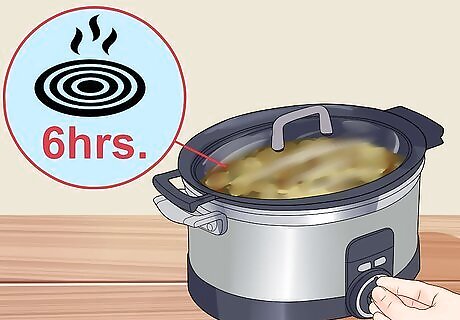
Heat the mixture to dissolve the cannabis into the oil. How you heat your mixture will depend on what you are cooking in. How much you are cooking will also impact your cooking method. The goal is to get your oil and pot mixture hot without scorching. Stir the mixture frequently. You can add a little water to the mix to avoid scorching. If using a slow cooker, cook the mixture on low for at least 6 hours. You may extend that to three days for a better infusion. If using a double boiler, cook on low for 6-8 hours. Eight hours will give you a better infusion. Stir occasionally and keep a close eye on your water level. Don't let your double boiler go dry. If using a saucepan, cook on low for no less than 3 hours. Stir frequently to avoid scorching. This method will be most susceptible to scorching.
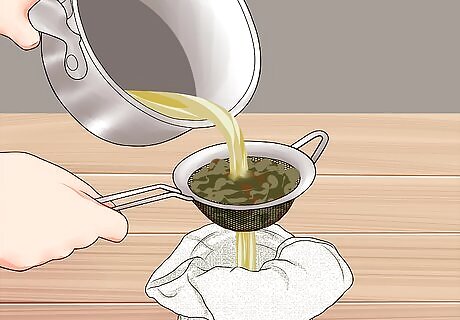
Strain the oil. Do this while the oil is still hot for best results. You can strain the oil using a wire strainer to remove the larger pieces of marijuana. If you still have solids you want to get rid of, strain a second time through a coffee strainer. This will take a lot of time so be careful and patient. You may want to do small batches while you continue to simmer the mixture. Alternately, you can do your straining through cheesecloth. Use multiple layers for more filtration. Put your cheesecloth over the top of a large mixing bowl. Secure the sides with a rubber band. Pour the mixture into the bowl. If you can get cheesecloth, this method is often preferred because you can filter more at a time than you can with a coffee strainer. If you only have small coffee filters, try using a rubber band for protection. Find a tall glass and place the coffee strainer on top. Cup the top a little into the glass. Use a rubber band around the top of the glass and over the edges of the filter to hold the filter in place. If you use a glass container to pour your hot oil into, heat your glass up first. Consider running your glass under warm water and then scalding hot water for a few minutes. This should keep the glass from shattering from the intense heat.
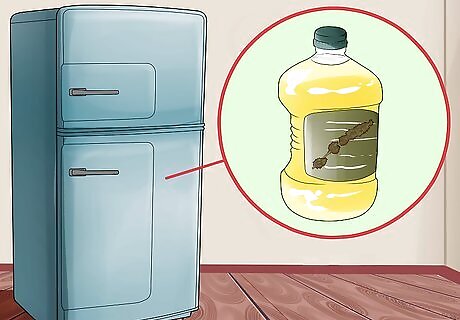
Store your oil for later use. When your oil has been strained, store your oil in a proper container with an airtight lid. Your oil will lose potency when exposed to oxygen. It will stay good for about two months. You can extend the shelf life longer by refrigerating it.
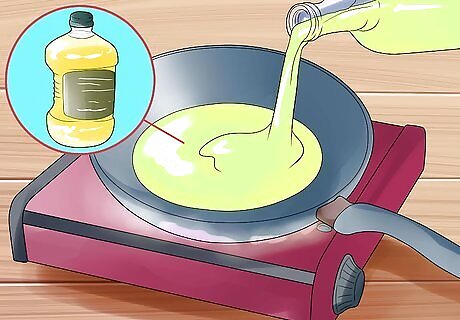
Substitute your cannabis cooking oil for a portion of your recipe's requirement. Your cooking oil will likely be very potent. You probably do not want to substitute all of your cooking oil with marijuana infused oil. Try substituting only a small portion such as half fluid ounce or more until you know the strength of your oil.
Infusing Butter With Marijuana
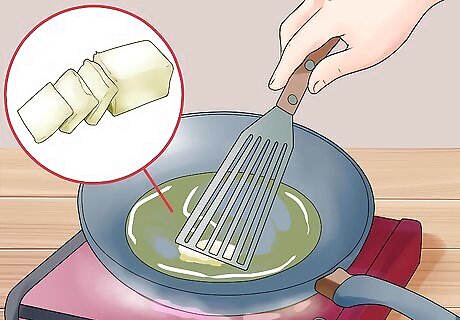
Heat a pan of butter. Use low heat to melt one stick of salted butter. Use a saucepan with a lid so it can be allowed to simmer later. Move your butter around while it melts to avoid burning. You can increase the amount of butter you make by adding more sticks and ground marijuana in proper proportions. Alternately you can use a slow cooker to cook your butter and marijuana. With this method, cook for 8-24 hours stirring occasionally.

Grind your marijuana. For each stick of butter you will need at least a quarter of an ounce of ground pot. Remove the seeds, leaves, and stems and focus on the flower buds. Grind the dried flower bud in a coffee grinder or food processor. Finer grinding may be done with a mortar and pestle. If you are a medical patient you may want to double your dose to ensure the better results with less butter.
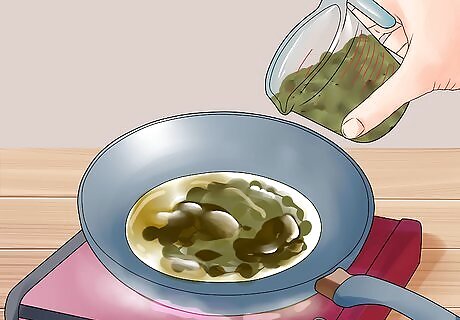
Simmer the mixture. Add your quarter ounce or more of finely ground cannabis to your melted butter. Keep the temperature at low. Stir the ground pot into your butter until it is evenly distributed. If your butter starts getting too hot, add a little water to reduce the temperature.
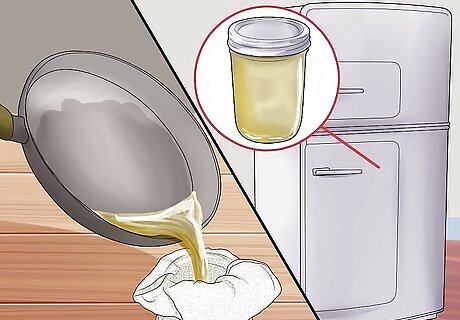
Strain the butter and refrigerate. Choose a storage container for your butter. Cover the top with cheesecloth for straining. Use a rubber band around the top of the container to hold the cheesecloth in place. Pour the mixture through the cheesecloth into the container. Squeeze the solids to get as much butter out as possible. Store in an airtight container in your fridge for later use. You may also use a wire mesh strainer. If you used less finely ground marijuana, the wire mesh will catch the large solid pieces. Squeeze the solids by pushing on them with a metal spoon to get excess butter from them.
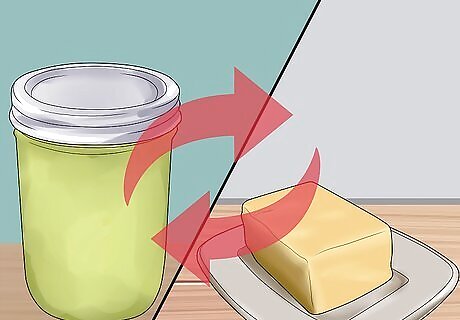
Substitute your marijuana infused butter for regular butter. Unlike with oils, most recipes use small amounts of butter for flavor. You can substitute the entire recipe amount with marijuana butter. If you find that you are not getting the needed medicinal effect, consider increasing the amount of marijuana per stick of butter to a half an ounce. Alternately, you can use a different method of cooking with marijuana.
Making Marijuana Flour
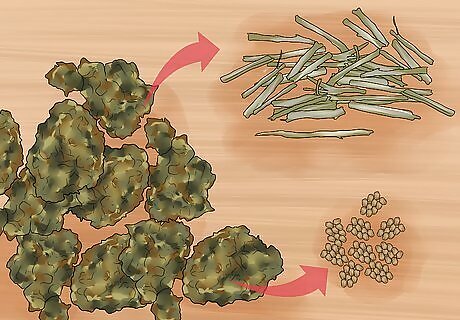
Remove all stems and seeds from the marijuana buds. The buds and flowers have the highest concentrations of cannabinoids are located in the buds. Remove any stems or seeds and allow the buds to dry thoroughly. You will need them as dry as possible to form powder. Even a small amount of moisture can be the difference between powder and paste.
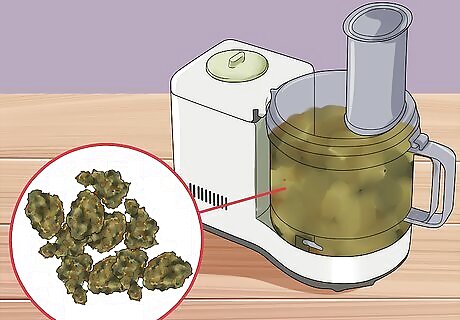
Grind the flowers. Use a food processor with sharp blades or a coffee grinder. The goal is to make a fine powder almost like flour itself. Keep blending and grinding until you see almost everything is pulverized. It may take some time.
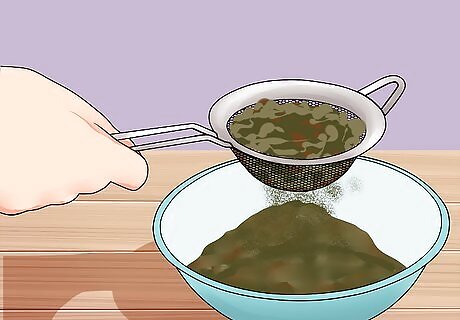
Sift through the ground flowers for unground parts. You may find that you still have some unground parts. Use a wire strainer or flour sifter over a bowl to separate the ground and unground parts. You should have only a little bit, if much at all, unground. Set aside the bowl of marijuana flour for now.
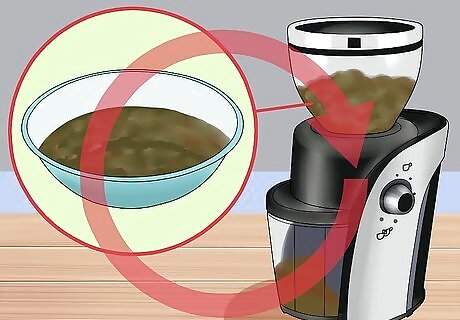
Regrind the unground parts. The unground parts left in your strainer need to be reprocessed. If you have a coffee grinder, send them through a second time. If you are not getting the result you hoped for or if you started with a food processor, move the unground parts to a mortar and pestle. Apply pressure with the mortar and "stir" the unground parts to produce the necessary grinding action. You may find that this produces the most fine texture for your flour. If you are not satisfied with the output of your food processor or coffee grinder, try the mortar and pestle. Keep in mind that this will require a lot of elbow grease. However, if you pre-grind using a coffee grinder or food processor then this should be easier.
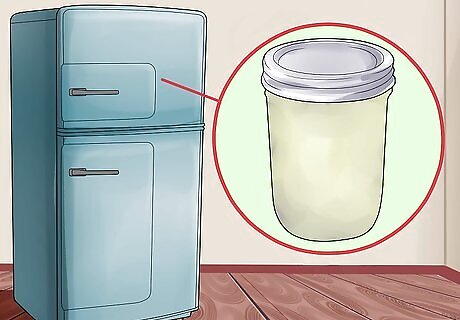
Store your marijuana flour in an airtight container. The marijuana's potency will be degraded by oxidation if not stored properly. Use an airtight container. Vacuum sealing will work great as well. Try to use it the same day or within 24 hours. Store in a freezer for long term storage.
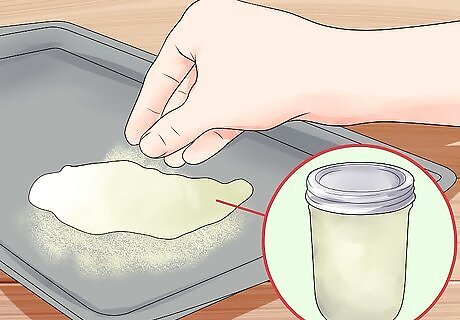
Substitute your marijuana flour for a portion of your recipe's requirement. Generally you are looking at about a 10% substitution but as much as 20% may be ok. This is especially true for baked good that must rise such as breads. Unlike using infused butter or oil, marijuana flour is a true substitution. Marijuana flour doesn't act quite the same as regular flour. An alternate method of storage involves pre-mixing your flour with regular baking flour. Store your mixture in an airtight container though. Just because it is mixed with regular flour does not mean it is protected from oxidation. Consider storing only pre-measured portions in vacuum sealed bags in a freezer for optimal usage.




















Comments
0 comment